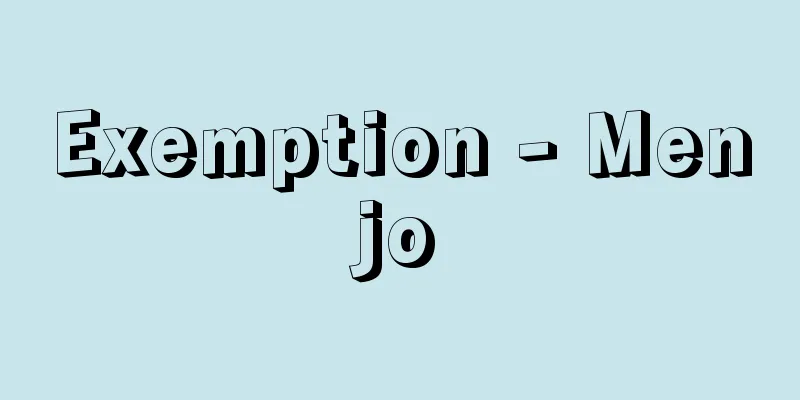Public expenditure - Koyoufutan
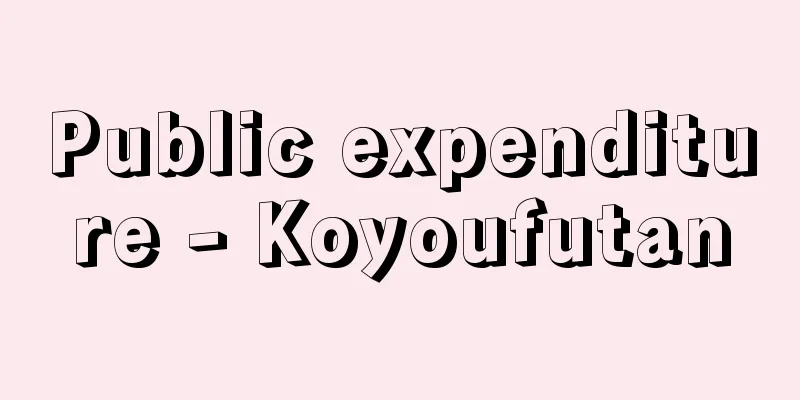
|
It refers to an economic burden that is forcibly imposed on citizens to meet the demand for a specific public utility (a business that benefits the public). It is a system recognized in the event that materials or labor essential for a public utility cannot be voluntarily acquired from the rightful owner. The public utility referred to here may be one carried out by the state or a public organization (construction of government buildings, schools, roads, parks, rivers, etc., disaster prevention measures) or one run privately (electricity, gas, local railways, etc.). The right of a private company to impose a public charge is called the public charge privilege. Because a public charge is a unilateral and compulsory burden imposed on citizens, it requires a legal basis (Article 29 of the Constitution). [Yasuhito Abe] Personnel and material costs for official usePublic charges are broadly divided into personal public charges and material public charges. Personal public charges refer to the obligation of a specific person to perform or refrain from performing a certain act or to provide a certain service for a specific public project. There are three types: contributions, labor or material charges, and service charges in kind. [Yasuhito Abe] ContributionA charge is a personal public burden that is an obligation to pay money. It is also called a share. There are beneficiary charges (such as sewerage business charges) and causer charges. Charges can be collected by the government in the same way as taxes. [Yasuhito Abe] Labor or material burdenThis refers to the obligation to provide labor or goods as a public service charge. It is recognized to respond to emergency disasters (Articles 64 and 65 of the Disaster Countermeasures Basic Act, Articles 23-2, 24, and 26 of the Disaster Relief Act, Articles 24 and 28 of the Flood Control Act, and Article 27 of the Large-Scale Earthquake Countermeasures Special Measures Act). [Yasuhito Abe] Husband role actual productThe term "service in kind" refers to a personal public service charge that is an obligation to selectively provide labor or goods and money. In regions where the monetary economy is not well developed, it has been recognized that it is more convenient for the obligor to directly provide labor or goods rather than providing money, and is an exception under the current law (Article 36 of the Land Improvement Law, Article 49 of the Flood Damage Prevention Association Law). A public use burden is a burden imposed on a specific property right, regardless of the owner, because that property right is necessary for a specific public project, and there are three types: public use restrictions, public use expropriation (public use levy), and public use right conversion. Public use restrictions recognize the property right of a private person, such as ownership, but merely impose public law restrictions on it, whereas public use expropriation is the compulsory acquisition of the property right itself, and land expropriation is a typical example of this, and public use right conversion is a method of granting new rights in place of previous rights, as seen in land readjustment, land improvement, urban redevelopment, etc. [Yasuhito Abe] [Reference items] | | | | |Source: Shogakukan Encyclopedia Nipponica About Encyclopedia Nipponica Information | Legend |
|
特定の公益事業(公共の利益となる事業)の需要を満たすために強制的に国民に課せられる経済的負担をいう。公益事業のため必要欠くべからざる物や労力を権利者から任意に取得できない場合に備えて認められている制度である。ここでいう公益事業は国または公共団体が行うもの(庁舎、学校、道路、公園、河川等の建設、災害対策)であるか、民営(電気、ガス、地方鉄道等)であるかを問わない。私企業が公用負担を課すことができる権利を公用負担特権という。公用負担は国民に一方的、強制的に負担を課すものであるから、法律の根拠を要する(憲法29条)。 [阿部泰隆] 人的公用負担・物的公用負担公用負担は大別して人的公用負担と物的公用負担がある。人的公用負担とは、特定の人が特定の公益事業のために必要な作為・不作為または給付の義務を負担することをいう。負担金、労役または物品負担、夫役現品の種類がある。 [阿部泰隆] 負担金負担金とは金銭給付義務たる人的公用負担をいう。分担金ともいう。受益者負担金(下水道事業負担金など)と、原因者負担金がある。負担金は税金と同様に行政徴収することができる。 [阿部泰隆] 労役または物品負担労役または物品の給付義務たる人的公用負担をいう。非常災害に緊急に対処するために認められている(災害対策基本法64条、65条、災害救助法23条の2、24条、26条、水防法24条、28条、大規模地震対策特別措置法27条)。 [阿部泰隆] 夫役現品夫役現品とは労役または物品と金銭との選択的給付義務たる人的公用負担をいう。貨幣経済の発達しない地方においては金銭を給付するよりも労役または物品を直接供給せしめるほうが義務者の便宜に適するとして認められてきたもので、現行法下では例外的存在(土地改良法36条、水害予防組合法49条)である。 物的公用負担とは、特定の財産権が特定の公益事業のために必要であるために、その所有者等のいかんを問わず、その財産権そのものに課せられる負担で、公用制限、公用収用(公用徴収)、公用権利変換の3種類がある。公用制限は、私人の所有権等その財産権はそのまま認めながら、それに公法上の制限を加えるにとどまるのに対し、公用収用は財産権そのものを強制取得するもので、土地収用がその典型であり、公用権利変換は、土地区画整理、土地改良、都市再開発などにみられるように、従前の権利にかえて新たな権利を賦与する手法である。 [阿部泰隆] [参照項目] | | | | |出典 小学館 日本大百科全書(ニッポニカ)日本大百科全書(ニッポニカ)について 情報 | 凡例 |
>>: Red-billed quelea (red-leaf bird)
Recommend
Jebb, Sir Richard Claverhouse
Born: August 27, 1841, Dundee [Died] December 9, 1...
Ozu paper - Ozu paper
〘Noun〙 A type of writing paper produced in the Ozu...
Helminthocladia yendoana (English spelling) Helminthocladia yendoana
…[Mitsuo Chihara]. . . *Some of the terminology t...
Maritime power
…It is often translated as maritime power. Before...
Cavallino, B.
…This area was especially famous for its Spanish-...
Garter (English spelling)
A device for fastening socks. There are those that...
bourtree
…Japanese elderberry is also called sekkotsu-ki a...
Mesitornis variegata (English spelling)
…A general term for birds in the Mesoenatidae fam...
La Colombière (English spelling)
A late Paleolithic site in the Ain department in e...
Gibbons, G.
…The total length of the building is 515 feet (ab...
Post office - Ekitei
〘noun〙① Sending luggage from one post station to a...
codon
…(3)Another difference between eukaryotic and pro...
Red horse mackerel - Red horse mackerel
A marine fish of the order Perciformes, family Ca...
Zhang Zhao; Chang Chao
[Born] Kangxi 30 (1691) [Died] 10th year of Qianlo...
old cocoyam (English spelling) old cocoyam
…Many species of plants in the Araceae family use...
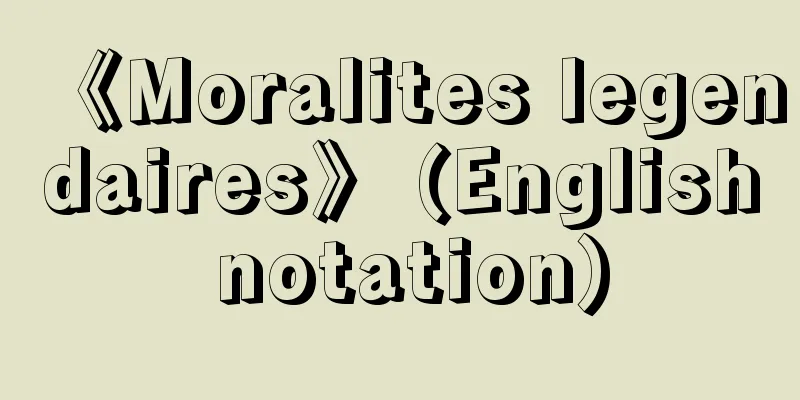
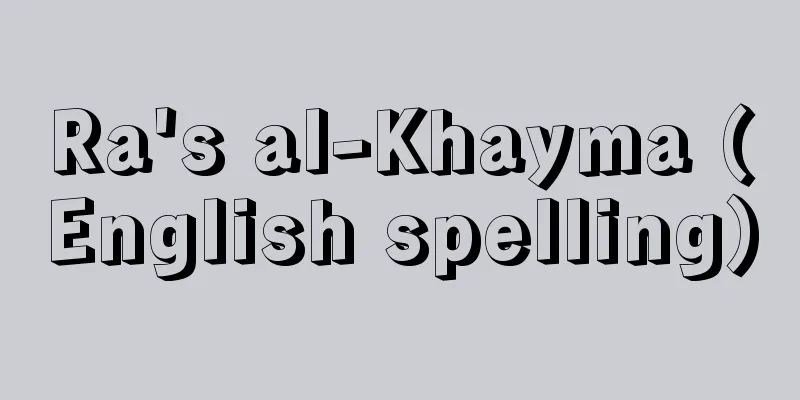
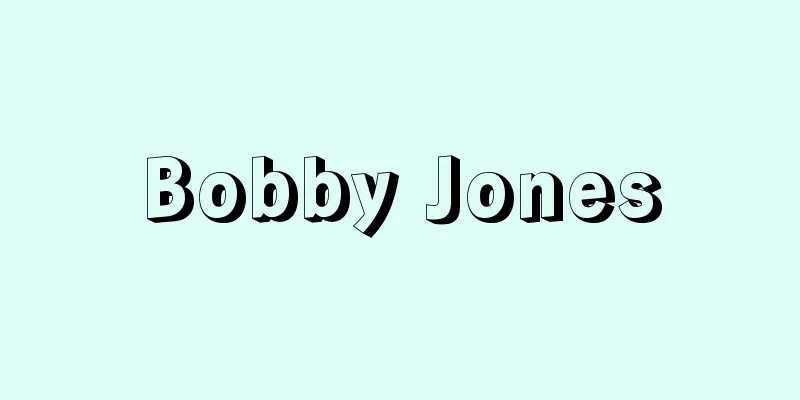
![Onsenguchi [Hot spring] - Onsenguchi](/upload/images/67cfe339eae7b.webp)
